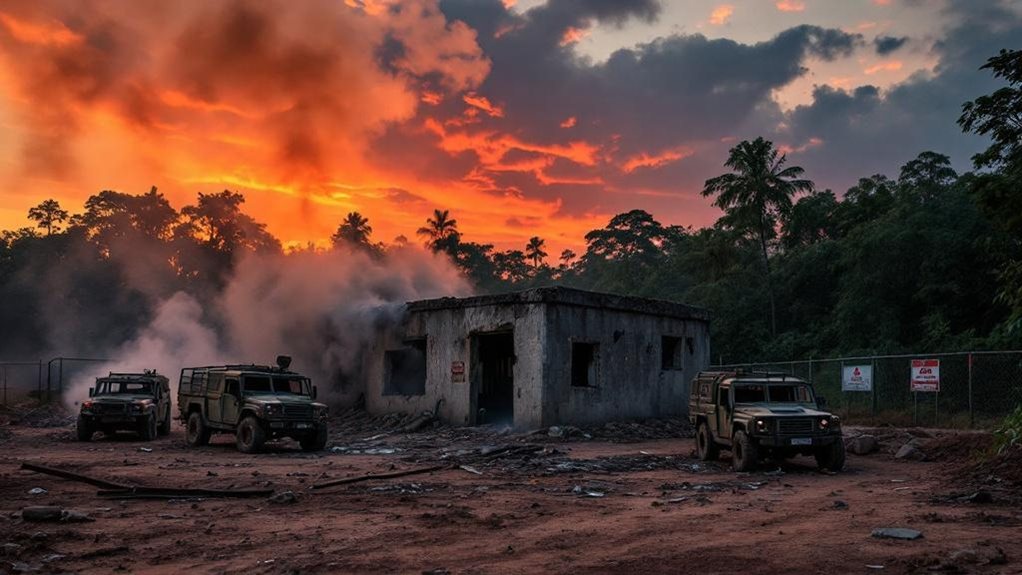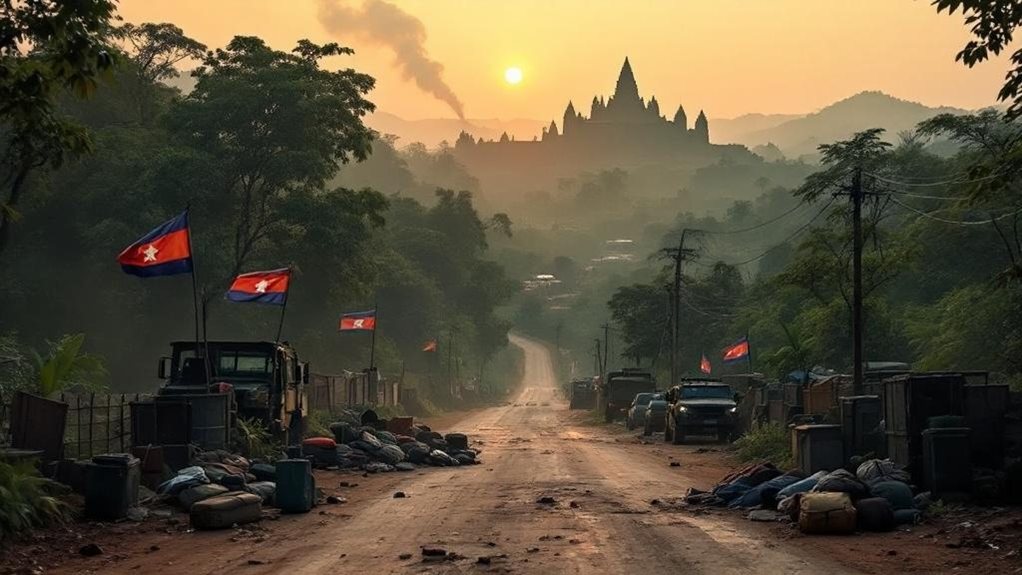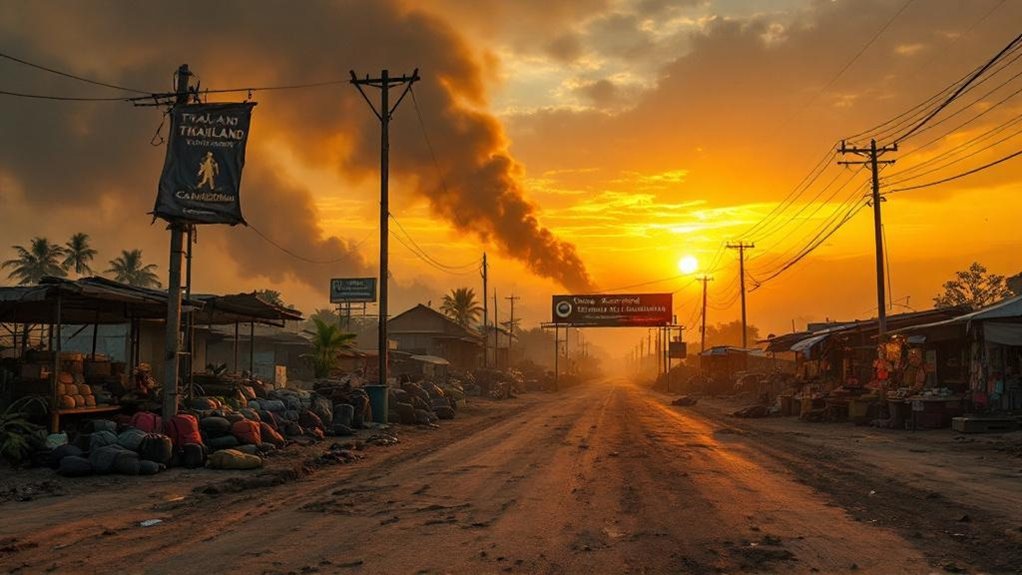The Surin Shelter, near the Cambodia-Thailand border in Surin Province, became embroiled in intensified confrontations from July 24, 2025, amidst the deepening border conflict. This turmoil led to at least 34 fatalities and 32 injuries within the conflict area. The clash forced significant civilian displacement, with over 200,000 individuals affected across both countries. Heightened military actions and diplomatic tensions exacerbated the situation, highlighting the humanitarian crisis. Explore the intricacies of this ongoing conflict and its profound effects.
The Surin Shelter, located near the Cambodia-Thailand border in Thailand’s Surin Province, became a flashpoint of conflict on or shortly after July 24, 2025, amidst escalating border clashes. The timing of this unrest coincided with a surge in the 2025 Cambodia–Thailand border conflict, which involved multiple skirmishes. Surin Province, adjacent to Ubon Ratchathani, had already experienced landmine incidents and troop confrontations, contributing to the broader regional tensions that had been increasing since early 2025. The conflict at Surin Shelter resulted in considerable casualties and damage. At least 34 deaths were reported in the overall border conflict, with Thai figures including civilian and military fatalities from the Surin area. The Thai side reported 13 civilian and 8 military deaths, though specific casualty numbers directly at Surin Shelter were not fully separated. Additionally, 32 civilians were reported injured according to Thai sources. Infrastructure around the Surin Shelter likely faced damage, reflecting the broader pattern of skirmishes along the border. The root causes of the Surin Shelter fury can be traced back to the Franco-Siamese Treaties between 1904 and 1907, with longstanding border disputes exacerbated by rulings on the Preah Vihear Temple. Immediate triggers included incidents such as Thai troops blocking Cambodian visitors and a clash near the Emerald Triangle in May 2025. Diplomatic tensions worsened with the expulsion of diplomats and withdrawal of ambassadors, contributing to heightened military readiness and nationalist sentiment in border provinces. Military activities around the Surin Shelter included an increased Thai presence in Surin Province to secure the border. Skirmishes featured small arms, landmines, and tactical incursions by both sides. A landmine incident near Ubon Ratchathani was implicated in escalating violence affecting the adjacent Surin Shelter area. Both Thai and Cambodian forces were accused of initiating hostilities locally, with the precise sequence of events at Surin Shelter remaining unclear. The civilian impact was significant, with many caught in the crossfire near Surin Shelter. This resulted in casualties, injuries, and temporary displacement due to fear and panic. Over 200,000 people were displaced across Thailand and Cambodia due to the conflict, further highlighting the humanitarian crisis. Disruptions to daily life, commerce, and cross-border movement intensified, highlighting humanitarian concerns in contested zones.









